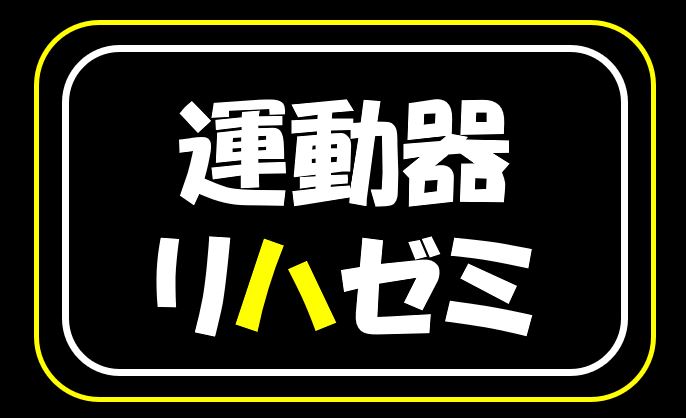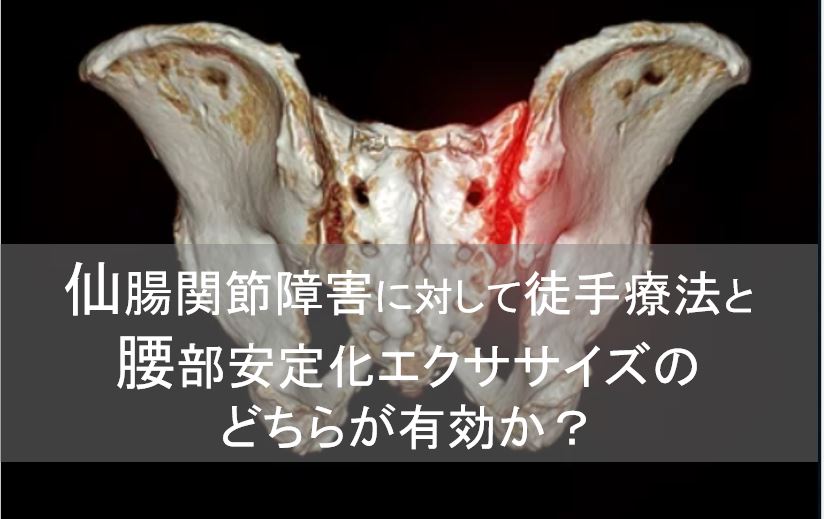こんにちは!
運動器専門のリハビリスタッフです!!
いつもお世話になります。
今回は、『仙腸関節障害に対して徒手療法と腰部安定化エクササイズのどちらが有効か?』
について解説させていただきます。
仙腸関節は仙骨と腸骨で構成される関節です。
仙腸関節障害は非特異的腰痛(画像が難しい腰痛)であり、急性腰痛症(いわゆるぎっくり腰)の原因の一つであるとされています。
また慢性腰痛症の要因のひとつでもあります。
仙腸関節障害は、1905年にGoldthwaitが提唱しており、外傷や感染症などによる明らかな関節破壊を伴わない仙腸関節由来の痛みとしております。
また、MRやCT画像での仙腸関節の機能障害を示す特異的な所見を捉えることは困難(Bernard TN Jr.1991)と報告されています。
近年では、3D-CTにて仙腸関節障害が評価ができるケースもあるようです。
腰痛に占める仙腸関節性腰痛の頻度は3.5~30%との報告があるが、村上の1年間調査では504例中54例(10.7%)であった(村上.2010)とされています。
そんな中、2019年に、仙腸関節障害に対して徒手療法と腰部安定化エクササイズのどちらが有効かについて検証した論文が海外で報告されております。
この論文の検証結果が気になるところです。
◆論文紹介
Randomized Controlled Trial
J Bodyw Mov Ther (IF: 1.43; Q2)
. 2019 Jan;23(1):177-182.
doi: 10.1016/j.jbmt.2018.01.014. Epub 2018 Jan 31.
Comparison of manipulation and stabilization exercises in patients with sacroiliac joint dysfunction patients: A randomized clinical trial
仙腸関節機能障害患者におけるマニピュレーションとスタビライゼーションエクササイズの比較。無作為化臨床試験
Fahimeh Kamali 1, Mehdi Zamanlou 2, Ali Ghanbari 1, Abbass Alipour 3, Soha Bervis 4
Affiliations expand
- PMID: 30691749 DOI: 10.1016/j.jbmt.2018.01.014
Abstract
Background: Manual therapy and exercise therapy are two common treatments for low back pain. Although their effects have been discussed in several studies, the superiority of one over the other for patients with sacroiliac joint dysfunction is still unclear.
概要
背景 腰痛の治療法として、徒手療法と運動療法がよく知られています。その効果についてはいくつかの研究で議論されているが、仙腸関節機能不全の患者に対する一方の優劣はまだ不明である。
Objectives: The aim of this study was to compare the effects of manipulation (M) and stabilization exercises (S) in patients with subacute or chronic sacroiliac joint dysfunction.
目的 本研究の目的は,亜急性あるいは慢性の仙腸関節機能障害を有する患者において,マニピュレーション(M)と安定化運動(S)の効果を比較することであった.
Methods: The participants in this randomized controlled trial study were patients with subacute or chronic sacroiliac joint dysfunction for more than 4 weeks and less than 1 year. A total of 40 patients were randomized with a minimization method to the M (n = 20) or S (n = 20) group; 15 patients in each group received treatment. The treatment program lasted 2 week in group M and 4 weeks in group S. Pain and the Oswestry Disability Index (ODI) were recorded before and immediately after the treatment period.
方法 この無作為化比較試験研究の参加者は、4週間以上1年未満の亜急性または慢性の仙腸関節機能不全を持つ患者である。合計40名の患者を最小化法でM群(n=20)またはS群(n=20)に無作為に割り付け、各群15名の患者が治療を受けた。治療期間はM群2週間,S群4週間で,治療前と治療直後に痛みとOswestry Disability Index(ODI)を記録した。
Results: Both groups showed significant improvement in assessed pain and ODI (P < 0.05). There were no statistically significant differences between groups in post-intervention assessed pain or ODI (P > 0.05).
結果 両群とも評価された痛みとODIに有意な改善を示した(P < 0.05)。介入後の評価された痛みとODIには、群間で統計的に有意な差はなかった(P > 0.05)。
◆論文の結論
Conclusions: Despite the improvements seen after both manipulation and stabilization exercise therapies in patients with sacroiliac joint dysfunction, there was no significant between-group difference in the treatment effects. This result suggests that neither manual therapy nor stabilization exercise therapy is superior for treating subacute or chronic sacroiliac joint dysfunction.
結論 仙腸関節機能不全の患者において、マニピュレーション療法とスタビライゼーション運動療法の両方の後に改善が見られたにもかかわらず、治療効果に有意な群間差は見られなかった。この結果は、亜急性あるいは慢性の仙腸関節機能不全の治療には、手技療法も安定化運動療法も優れていないことを示唆している。
◆まとめ
上記論文では仙腸関節機能不全患者40名をマニピュレーション群20名と腰部安定化エクササイズ群20名の2群で治療効果の比較をしております。(実際に治療を受けたのは15名ずつ)
治療期間はマニピュレーション群が2週間、腰部安定化エクササイズ群4週間で治療前と治療直後に痛みとOswestry Disability Index(ODI:患者立脚型の腰痛評価)で評価しております。
結果として、両群ともに痛みとODIは有意に改善しておりますが、2群間での優劣はなかったようです。
上記論文の結果を踏まえると、仙腸関節障害に対してマニピュレーション(徒手療法)も腰部安定化エクササイズも効果はあるようですが、優劣はないようです。
よって、どちらか一方もしくは両方の治療を併用しても良いのかもしれませんね。
今回は、『仙腸関節障害に対して徒手療法と腰部安定化エクササイズのどちらが有効か?』
について解説させていただきました。


![[商品価格に関しましては、リンクが作成された時点と現時点で情報が変更されている場合がございます。] [商品価格に関しましては、リンクが作成された時点と現時点で情報が変更されている場合がございます。]](https://hbb.afl.rakuten.co.jp/hgb/1f7a7439.6deab8a7.1f7a743a.315603be/?me_id=1213310&item_id=21251977&pc=https%3A%2F%2Fthumbnail.image.rakuten.co.jp%2F%400_mall%2Fbook%2Fcabinet%2F7457%2F9784524227457_1_4.jpg%3F_ex%3D240x240&s=240x240&t=picttext)


